
As a gesture of support for the industrial action taken by the teachers union against the proposed Government changes to their pensions, Wandering and Lord Twynyrodyn decided to spend the day in a rather less confrontational environment. The initial destination was the beach car park at Llantwit Major on the South Glamorgan coast. Arriving at 10:45 after a pleasant journey through the country lanes when the topic of conversation was inevitably the policies of the coalition, they joined the Glamorgan Heritage coastal path just to the rear of the beach front cafe.

They immediately gained some height climbing to the cliff top for an exhilarating walk along the layers of limestone rock faces which are separated by softer layers of shale (mudstone). The shale often wears away quicker than the limestone leaving it unsupported, causing it to collapse and fall to the beach.
The rocks forming the cliffs were created during a period of the Earth's history called the Liassic, which was part of the early Jurassic times. This was about 180 million years ago.

The first sighting of St Donat's Castle, over a mile in the distance, is from the coastal path itself. A medieval castle built in the late 12th century, it directly overlook's the Bristol Channel. Since 1962 the castle has housed the international Sixth form of Atlantic College.

After seeing photographs of the castle in Country Life magazine, it was purchased and renovated by American newspaper magnate William Randolph Hearst in 1925. Hearst, who at the time was having an affair with the actress Marion Davies, spent a fortune upgrading the castle, installing electricity not only to his residence but also to the surrounding area. Hearst was renowned for holding lavish parties at St Donat's - guests included Charlie Chaplin, Douglas Fairbanks, and a young John F. Kennedy. Upon visiting St Donat's, George Bernard Shaw was quoted as saying: "This is what God would have built if he had had the money."
After Hearst's death in 1951 the castle was eventually purchased in 1962 by Monsieur Antonin Besse II (1927 - ) and given to the Governing Body of Atlantic College.
The College was founded by the German educationalist Kurt Hahn — who also set up Gordonstoun School in Scotland and the Salem School in Germany — as a practical response to the search for new and peaceful solutions in a world riven by political, racial and economic divisions (not a great deal has changed in the last fifty years!)
When Atlantic College opened it was hailed by The Times as "the most exciting experiment in education since the Second World War."

After passing the sea-front promenade to the rear of the college (the students were practicising rolling canoe's in the open air swimming pool in the grounds of the college!), the walk climbs into extremely pleasant woodland until you emerge once again onto the coastal path.

Soon on the horizon in the distance we saw our first glimpse of Nash Point Lighthouse, over an enormous field of wheat that ran almost to the cliff edge.
Nash Point itself is a promontory headland on the Monknash Coast. The Lighthouse was designed by James Walker, the chief engineer for Trinity House. Established in 1832, the lighthouse was electrified in 1968. Nash Point Lighthouse became the last manned lighthouse in Wales, and was only automated in 1998.

Trinity House provide public tours of the lighthouse on a Wednesday, Saturday or Sunday from July to September. The massive foghorn is blown on the first Saturday of every month and third Sunday.

At this point we had to leave the coastal path and head in-land across a series of open access fields before arriving at Marcross, where we spent an hour in a delightful village pub called the Horseshoe Inn - the pint of Cwrw Braf and bar-food is highly recommended.

The road heads east opposite the Horseshoe Inn, passing the Old Schoolhouse and Marcross Court, before taking a right turn down a 'C' road. This led to a section of the Millenium Trail, in another area of woodland that joined and passed through part of the grounds of Atlantic College itself.
Leaving the College the walk passes through King George Fields before rejoining the coastal path for the short return leg to Llantwit Major beach. We decided to leave the coastal path for the last half mile and walk from Treslian Bay to the car park over the slabs of rock created by the build up of millions of shells of tiny sea creatures, together with mud brought into the sea by ancient rivers. Eventually hundreds of metres of this sediment became compacted to form limestone. We enjoyed an ice-cream on the beach prior to the journey home.
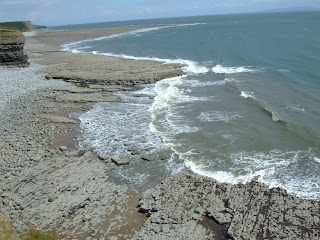
The walk was 9 miles and took approximately 4 hours (including an hour spent obtaining refreshments in the Horseshoe Inn!)
Photographs taken on this walk can be viewed here. Select 'slide-show' for automated viewing.






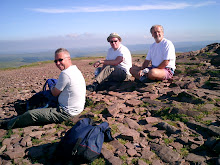


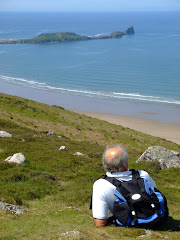


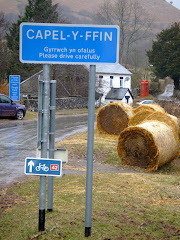
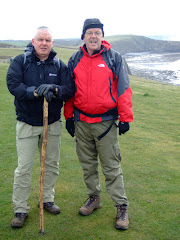


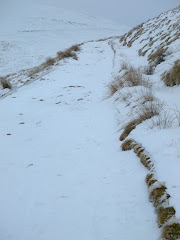


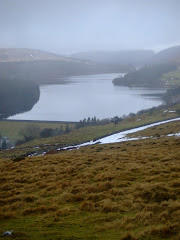














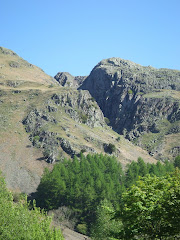

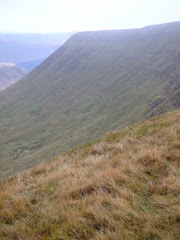

No comments:
Post a Comment